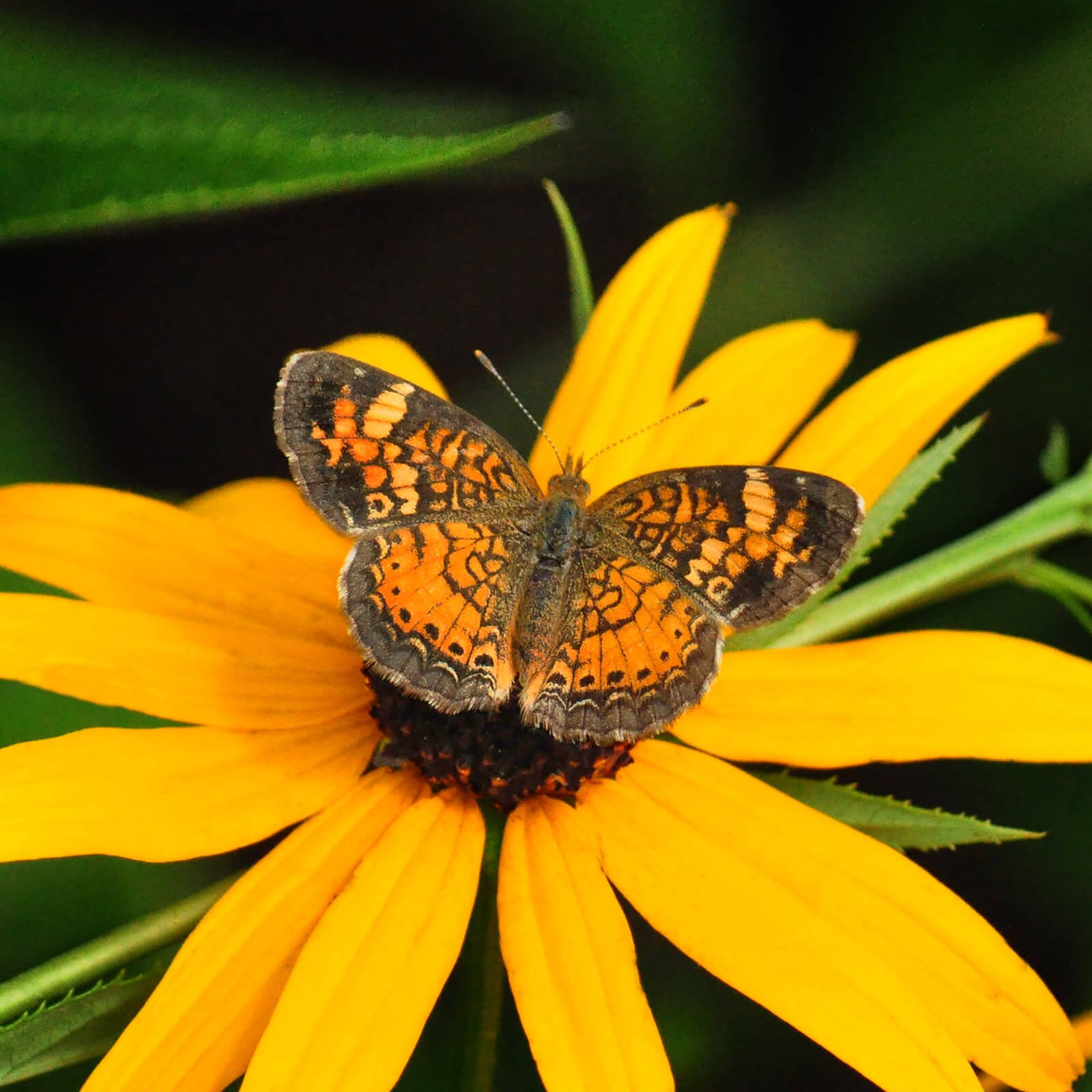 Image 1 of 2
Image 1 of 2

 Image 2 of 2
Image 2 of 2

Smooth Aster (Symphyotrichum laeve)
Such a pretty late bloomer that the native bees love. It attracts many native bees, butterflies, and moths along with many other insects. It is the host plant to the Pearl Crescent and 43 other species of butterflies and moths in our area (illnoiswildflower.info). It is also listed as a preferred pollinator plant by the Xerces Society (Xerces.org). Smooth Aster also has 36 specialist bees that use it as a host plant (Holm, 2017) (Johnson and Colla, 2023)! If you are lucky, this plant will spread slowly by non-aggressive rhizomes.
Photo credit: (1) Joshua Mayer, (2) John Blair
Such a pretty late bloomer that the native bees love. It attracts many native bees, butterflies, and moths along with many other insects. It is the host plant to the Pearl Crescent and 43 other species of butterflies and moths in our area (illnoiswildflower.info). It is also listed as a preferred pollinator plant by the Xerces Society (Xerces.org). Smooth Aster also has 36 specialist bees that use it as a host plant (Holm, 2017) (Johnson and Colla, 2023)! If you are lucky, this plant will spread slowly by non-aggressive rhizomes.
Photo credit: (1) Joshua Mayer, (2) John Blair
Such a pretty late bloomer that the native bees love. It attracts many native bees, butterflies, and moths along with many other insects. It is the host plant to the Pearl Crescent and 43 other species of butterflies and moths in our area (illnoiswildflower.info). It is also listed as a preferred pollinator plant by the Xerces Society (Xerces.org). Smooth Aster also has 36 specialist bees that use it as a host plant (Holm, 2017) (Johnson and Colla, 2023)! If you are lucky, this plant will spread slowly by non-aggressive rhizomes.
Photo credit: (1) Joshua Mayer, (2) John Blair
Life Cycle: Perennial
Sun Exposure: Full, Partial
Soil Moisture: Medium-Wet, Medium, Medium-Dry
Height: 4 feet
Plant Spacing: 1.5-2 feet
Bloom Time: August-October
Bloom Color: Light Bluish-Purple
Advantages: Caterpillar Favorite, Pollinator Favorite, Bird Favorite, Great Landscaping Plant
Host Plant: Pearl Crescent and 43 other species of butterflies and moths in our area (illnoiswildflower.info)
Specialist Bee: Andrena asteris, A. aliciae, A. simplex, A. asteroides, A. canadensis, A. chromotricha, A. hirticincta, A nubecula, A. placata, A. simplex, Calliopsis coloradensis, Colletes americanus, C. compactus, C. rufocinctus, C. simulans, C. speculiferus, Melissodes dentiventris, M. boltoniae, M. confuses, M. coreopsis, M. dentiventris, M. druriellus, M. illatus, M. lustrus, M. menuachus, M. microstictus, M. niveus, M. semilupinus, M. subagilis, M. subillatus, M. tinctus, M. trinodis, Perdita octomaculata, P. albipinnis, Pseudopanurgus aestivalis, P. andrenoides, P. compositarum, Megachile inimical, Anthophorula asteris, and Dianthidium simile (Holm, 2017) (Johnson and Colla, 2023)
Resource: Holm, Heather. Bees: An Identification and Native Plant Forage Guide. Pollination Press LLC, 2017
Resource: Johnson, Lorraine, and Sheila Colla. A Northern Gardener’s Guide to Native Plants and Pollinators: Creating Habitat in the Northeast, Great Lakes, and Upper Midwest. Island Press, 2023






